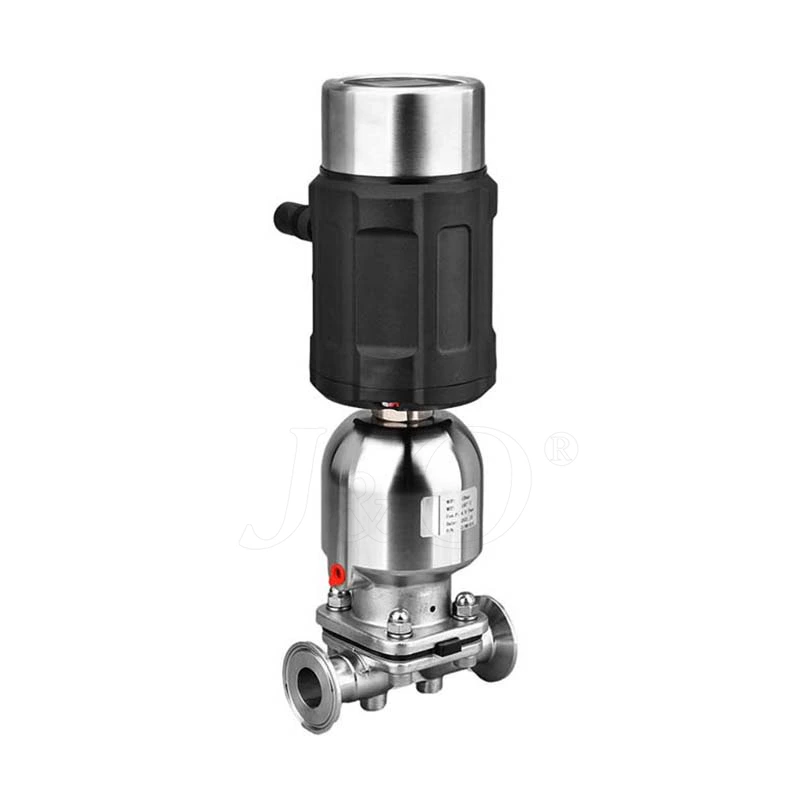Stainless Steel Sanitary Diaphragm Valve Has Higher Stability
Sanitary Diaphragm Valve has higher stability
The stainless steel tri clamp diaphragm valve consists of a stainless steel 3 way sanitary diaphragm valve and a pneumatic actuator. It uses compressed air as a power source to regulate the flow of fluid media in process pipelines.
The structure of the stainless steel hygienic diaphragm valve is very different from that of general valves. It relies on a soft rubber membrane or plastic membrane to control fluid movement. Commonly used diaphragm valve materials are cast iron diaphragm valves, cast steel diaphragm valves, stainless steel diaphragm valves, and plastic diaphragm valves. The advantage of the stainless steel tank bottom diaphragm valve is that its operating mechanism is separated from the medium passage, which not only ensures the purity of the working medium, but also prevents the possibility of the medium in the pipeline impacting the working parts of the operating mechanism. In addition, no separate seal is required at the valve stem unless the stainless steel sanitary diaphragm valve is used as a safety facility in controlling harmful media. In the diaphragm valve, since the working medium contacts only the diaphragm and the valve body, both of which can be made of a variety of different materials, the valve can ideally control a variety of working media, especially for media with chemical corrosion or suspended particles.
Since the stainless steel sanitary diaphragm valve adopts a valve body with corrosion-resistant lining and corrosion-resistant diaphragm, a stuffing box-free structure, an elastic diaphragm as the throttling element, and a smooth valve body flow channel, the pneumatic film diaphragm valve has the advantages of small negative force, large flow, no leakage, convenient and reliable, fireproof and explosion-proof, and is widely used in industrial automation systems. The flow regulation of media that do not allow contamination.
The closing and opening of the stainless steel sanitary diaphragm valve is achieved by the pressure from the pipeline acting on the reinforced rubber diaphragm. When the pressure medium enters the valve control chamber, the diaphragm is pressed down to close the valve channel. When the pressure in the control chamber is discharged to the atmosphere or the downstream pipeline, the diaphragm rises and the valve channel is opened. The valve has no valve stem, sealing gasket, directional seat, etc. The only moving part in the channel is the diaphragm, so there is no rust and locking phenomenon, and it has higher stability. A variety of structural forms and control forms can be applied to a variety of fluid control needs.
